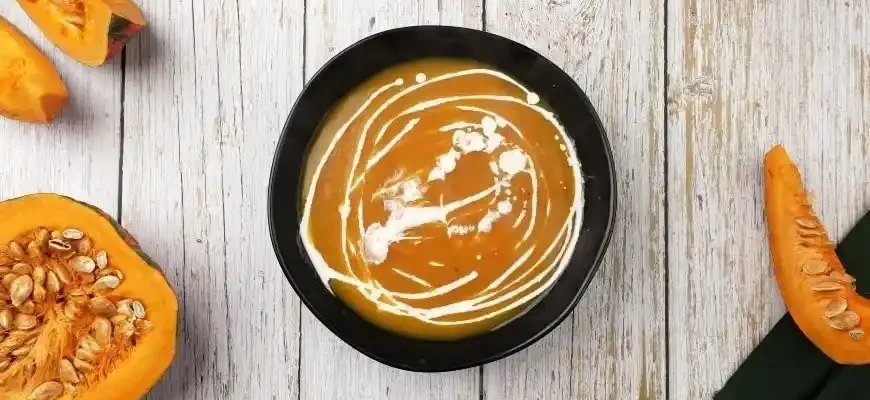If you’ve ever been tempted by the warm, inviting aroma of pumpkin bread wafting from a kitchen, you’re not alone. This comforting, autumnal treat has found its way into the hearts (and stomachs) of many, and for good reason. It’s moist, flavorful, and easy to make. Whether you’re looking to bake something for yourself or share it with family and friends, here’s everything you need to know about making pumpkin bread, from ingredient selection to troubleshooting common baking problems. Let’s dive in.
The Basics of Pumpkin Bread
Pumpkin bread is a quick bread, meaning it doesn’t require yeast for leavening. Instead, it relies on baking soda or baking powder, making it quicker to prepare than yeast-based bread. The key ingredient, of course, is pumpkin, which not only gives the bread its signature flavor but also contributes moisture. Whether you use fresh pumpkin or canned, the results are typically delicious, though each choice has its advantages.
Key Ingredients
- Canned Pumpkin: Most recipes call for canned pumpkin puree. It’s convenient, consistent, and available year-round. Make sure you choose plain pumpkin puree, not pumpkin pie filling, which contains added sugar and spices.
- Flour: All-purpose flour works best in pumpkin bread, although you can experiment with whole wheat or gluten-free alternatives. Keep in mind that substitutions might affect the texture and moisture content.
- Sugar: Granulated sugar is the typical choice, but some bakers use a combination of brown sugar and white sugar to enhance the flavor with a slight molasses undertone.
- Eggs: Eggs help bind the ingredients together and give the bread structure. Some people use flax or chia eggs as substitutes for a vegan version.
- Oil or Butter: Oil (vegetable or canola) contributes to moisture and tenderness. Butter can be used for a richer flavor, but keep in mind it might alter the texture slightly.
- Spices: Cinnamon is the go-to spice for pumpkin bread, but nutmeg, ginger, and allspice can be added for a more complex flavor. Don’t forget a pinch of salt to balance everything out!
- Baking Soda and Powder: These are the leavening agents that make the bread rise. Ensure they are fresh for the best results.
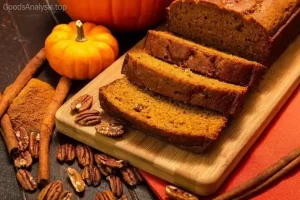
The Pumpkin Bread Recipe: Step-by-Step
Let’s roll up our sleeves and get to the fun part—baking! Here’s a straightforward, foolproof recipe for making delicious pumpkin bread.
Ingredients:
- 1 ¾ cups all-purpose flour
- 1 teaspoon baking soda
- ½ teaspoon baking powder
- 1 ½ teaspoons ground cinnamon
- ½ teaspoon ground nutmeg
- ¼ teaspoon ground ginger
- ½ teaspoon salt
- 1 cup canned pumpkin puree (not pumpkin pie filling)
- 2 large eggs
- 1 cup granulated sugar (or ½ cup white sugar + ½ cup brown sugar)
- ½ cup vegetable oil (or melted butter)
- 1 teaspoon vanilla extract
- Optional: ½ cup nuts (walnuts or pecans) or chocolate chips
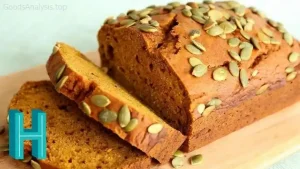
Instructions:
- Preheat the Oven: Set your oven to 350°F (175°C) and grease a 9×5-inch loaf pan or line it with parchment paper for easy removal.
- Mix Dry Ingredients: In a large bowl, whisk together the flour, baking soda, baking powder, cinnamon, nutmeg, ginger, and salt.
- Mix Wet Ingredients: In another bowl, beat the eggs and sugar together until smooth and creamy. Add the pumpkin puree, oil, and vanilla extract, and mix until fully incorporated.
- Combine: Gradually add the dry ingredients into the wet mixture, stirring gently until just combined. Be careful not to overmix, as this can result in a dense loaf.
- Optional Add-ins: If you’re using nuts or chocolate chips, fold them in now.
- Bake: Pour the batter into your prepared loaf pan. Bake for 55–65 minutes or until a toothpick inserted in the center comes out clean. Ovens vary, so start checking around the 50-minute mark.
- Cool: Let the bread cool in the pan for about 10 minutes, then transfer it to a wire rack to cool completely.
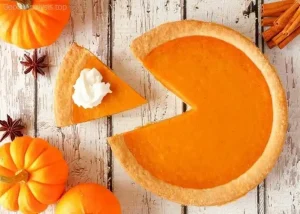
And there you have it! A simple, moist, and flavorful pumpkin bread.
Common Problems and Solutions
Even seasoned bakers can run into a few snags. Here are some potential issues you might encounter, along with advice on how to avoid or fix them.
- Dense Bread: If your pumpkin bread turns out too dense, it’s often due to overmixing the batter. Once you combine the wet and dry ingredients, mix just until everything is incorporated. Too much stirring can cause gluten to develop, resulting in a tough loaf. Solution: Stir gently and stop once you no longer see streaks of flour.
- Underbaked Middle: Sometimes, pumpkin bread can bake unevenly, leaving the center raw. This is usually because the oven temperature was too high or the bread was not cooked long enough. Solution: Use an oven thermometer to check the actual temperature of your oven. Bake the bread a little longer, covering it loosely with foil if the top starts to get too dark.
- Bread Sticking to the Pan: If the bread sticks to the pan, it can be a real frustration, especially when you’re trying to slice it. Grease your pan thoroughly or line it with parchment paper to avoid this. Solution: Always grease the sides and bottom of your pan, and consider using parchment paper for easy release.
Nutritional Considerations and Variations
Pumpkin bread is a relatively healthy option compared to many baked goods, thanks to the pumpkin itself. It’s rich in vitamins A and C, fiber, and potassium. However, like most quick breads, it’s still high in sugar and fat, especially if you use oil or butter.
For a healthier version, you can try some of these variations:
- Reduce Sugar: You can cut down on sugar, replacing some of it with unsweetened applesauce or mashed bananas.
- Whole Wheat Flour: For extra fiber, try using whole wheat flour or a mix of whole wheat and all-purpose flour.
- Oil Alternatives: Substitute part or all of the oil with Greek yogurt or avocado for added creaminess and a lower fat content.
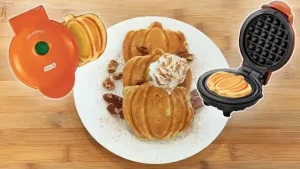
A Word of Caution
While pumpkin bread is generally considered healthy, it’s not something you should be eating daily if you’re watching your sugar intake or calories. If you have dietary restrictions—such as gluten intolerance, diabetes, or an allergy to nuts—you may need to adjust the recipe to suit your needs. Always consult a nutritionist or a medical professional if you have concerns about specific ingredients or portion sizes.
Personal Opinions
To get a broader perspective, I asked a diverse group of people about their thoughts on pumpkin bread.
- Sarah, 45, USA: “I love pumpkin bread, especially around Thanksgiving. It’s the perfect dessert—sweet, but not too rich. I always make mine with chocolate chips. My kids love it!”
- Javier, 63, Spain: “I didn’t know pumpkin bread was a thing until I moved to the US. Now I make it once a month. I use olive oil instead of vegetable oil for a slightly different taste. It’s delicious.”
- Amina, 32, Egypt: “Pumpkin bread is a great way to use up extra pumpkin, but I prefer making it with whole wheat flour and less sugar. It feels healthier that way.”
- Marcus, 50, UK: “I enjoy pumpkin bread, but I don’t bake it too often. It’s a bit sweet for me. I prefer it with a bit of cinnamon butter on top.”
- Mei, 28, China: “In China, we don’t usually bake with pumpkin, so when I first tried pumpkin bread, I was hooked. It’s so soft and flavorful. I’m definitely making it for my friends.”
Final Thoughts
Pumpkin bread is a classic that can be enjoyed by anyone, anywhere. Whether you’re baking it for a cozy fall morning or a holiday gathering, it’s a simple yet satisfying recipe that allows for plenty of customization. The most important thing is to have fun with it and experiment until you find the version that suits your taste. Happy baking!

